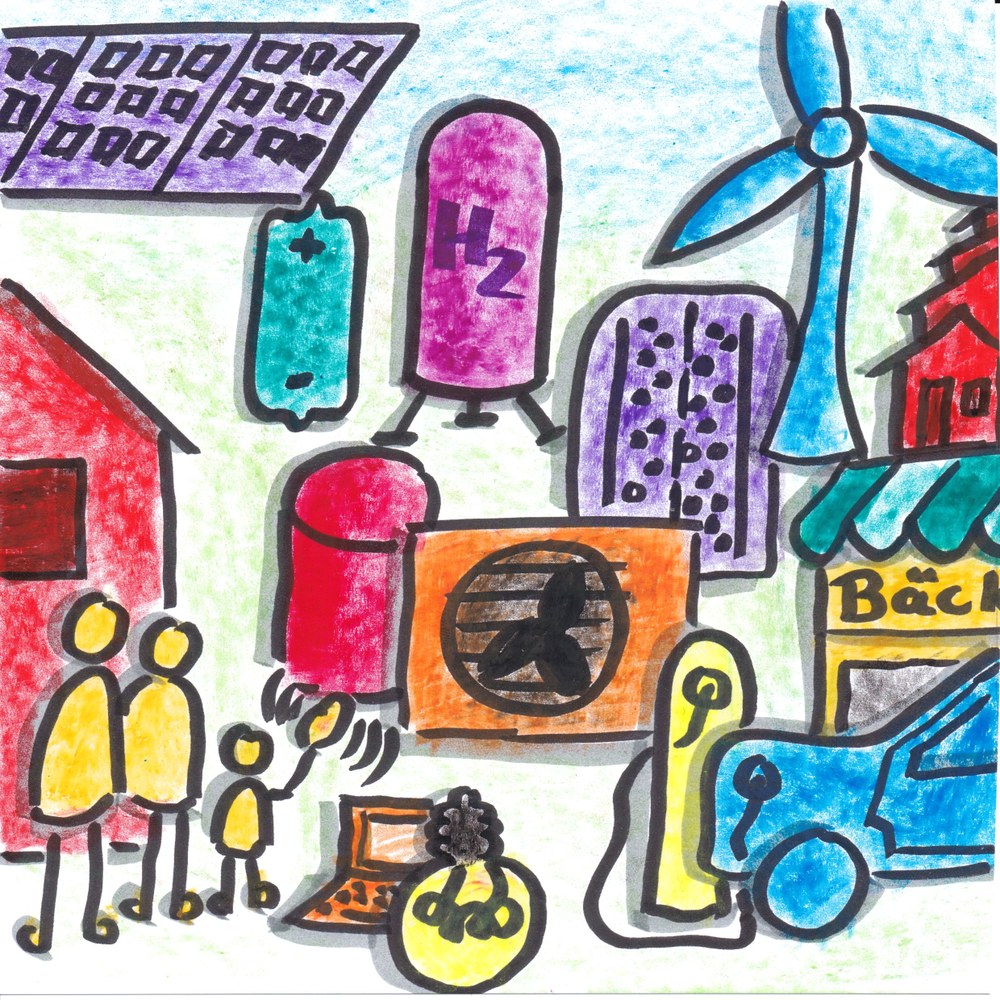Balancing energy supply and demand
Load and generation forecasts – energy management by sectors integration and storage
The simultaneity of electricity generation and consumption is the basis for a stable energy system. While fossil and nuclear power plants have so far been deployed according to demand, the dominant renewable energies in the electricity system are heavily dependent on weather - and therefore not available at any given time. As a result, we need to develop completely new system control concepts in order to harmonise demand and availability. A key principle of this energy management is that the task of synchronisation must be transferred from the generation side to the system and demand side - including the use of storage facilities. In addition to energy management, the best possible forecasts of load and generation are essential here.

Load and generation forecasts
We use statistical methods and artificial intelligence to analyse and forecast load profiles in buildings, districts and properties with the highest possible temporal resolution. To do this, we use measuring equipment specially tailored to this use in its properties. With the help of our tools, it is also possible to disaggregate complex load profiles, i.e. to break them down into individual partial loads. This data then serves as the basis for suitable energy management.
We also develop methods for predicting photovoltaic output in order to optimise generation forecasts. To this end, we have installed the Eye2Sky cloud camera network in north-west Germany, which can be methodically transferred to any region. We achieve high data quality by combining the camera data with ground and satellite-based information as well as numerical weather models. As a result, the forecasts are more high-resolution and robust than previous methods and can contribute to improving the operational management of power grids, for example.
The generation and reconversion of chemical energy sources can ensure the supply of energy in special spatial and temporal cases. In cooperation with stakeholders from industry, we are driving forward the necessary technology development.
Energy management through sector integration and storage:
When developing technical solutions for the temporal synchronisation of supply and demand, we at the Institute of Networked Energy Systems distinguish between two different time scales:
- Flexibility options
On the short time scales of conventional system controls in the order of seconds to hours, sector integration in particular offers great potential for synchronising demand and consumption. Our scientists are researching flexible load control in neighbourhoods and buildings, for example through the smart connection of electric vehicles to the power grid, through flexible operation of electricity-coupled heating devices and through model-based operational management optimisation of complex systems, such as neighbourhood solutions. Other potential solutions include battery-based storage systems or innovative power plant approaches for the provision of balancing power.
- Security of supply
To ensure year-round security of supply, we are developing solutions for longer-term effects (e.g. so-called "dunkelflauten") and for seasonal balancing (e.g. additional winter consumption due to heating energy). At the national level, we are primarily focussing on hydrogen-based energy storage in gas caverns. On the one hand, we are researching the integration of gas and electricity grids with the aim of creating an integrated overall system. On the other hand, we are looking at the technical aspects of converting the infrastructure of caverns and pipelines.
We are developing technologies and operational management concepts that can provide the necessary generation and consumption flexibility to synchronise the increasingly non-deterministic generation with the load profile.
